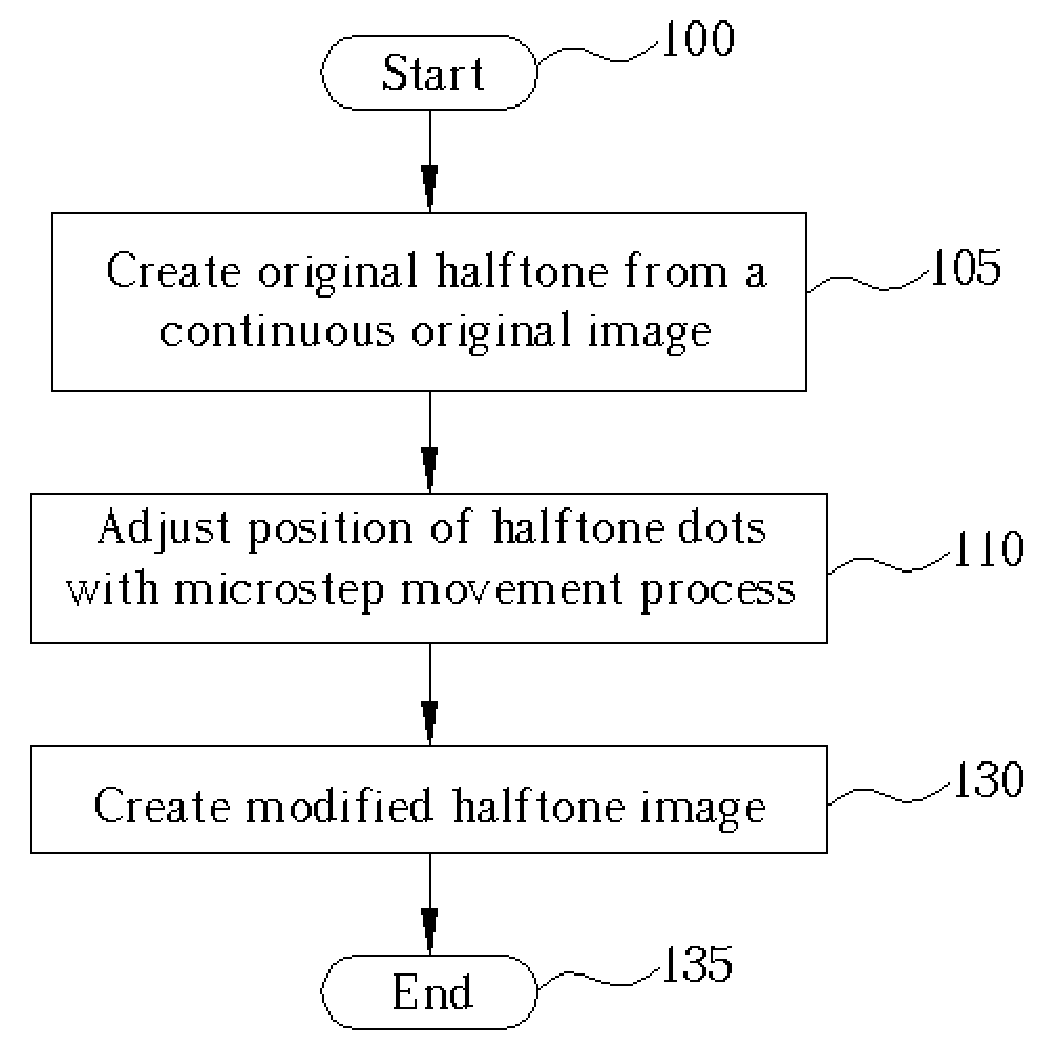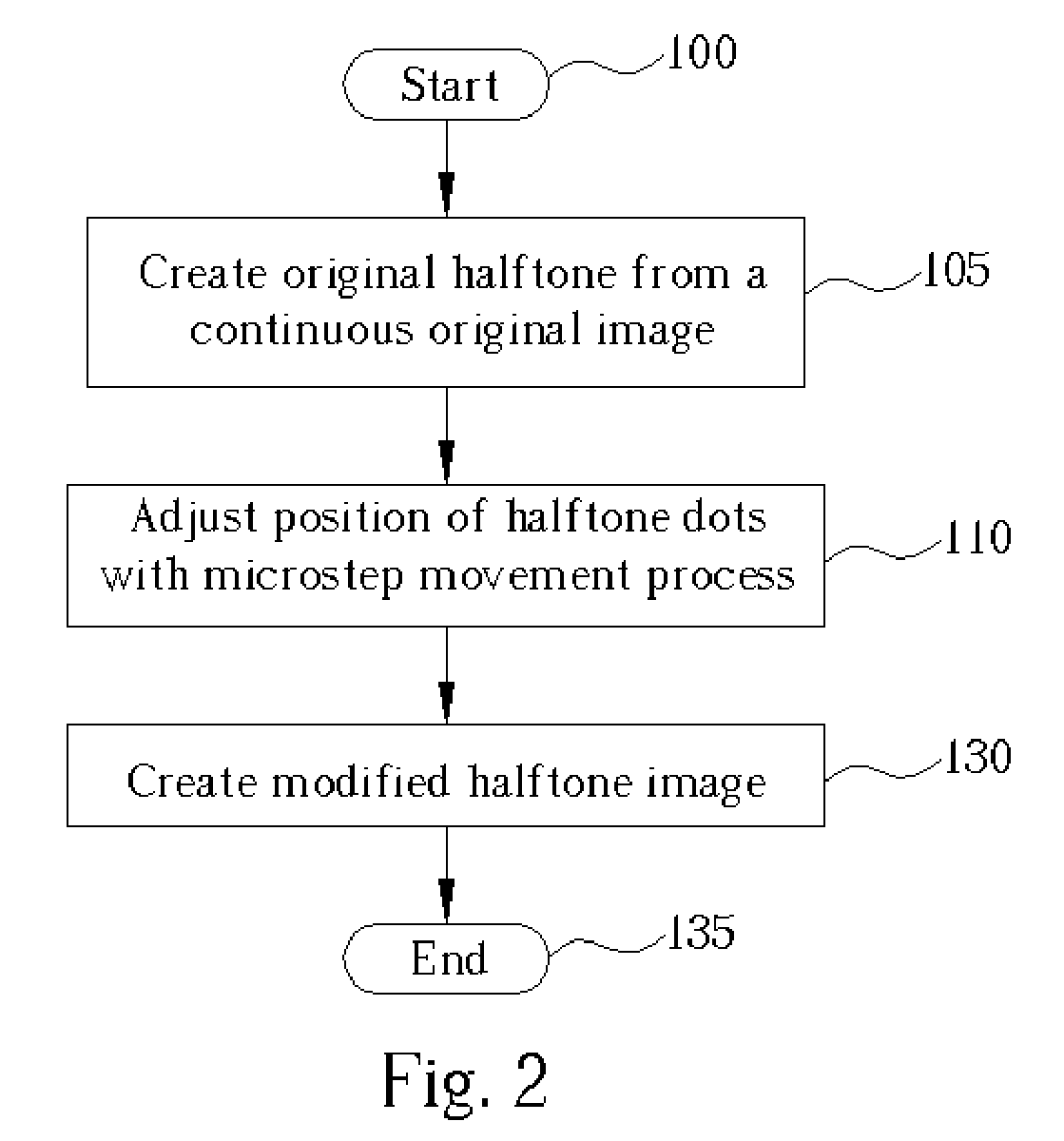Method of adjusting halftone image dot positions for improving print quality
a technology of dots and halftones, applied in the field of halftone images, can solve the problems of unsatisfactory visual patterns and suffer achieve the effects of increasing the average distance between the selected dot and the dots, and improving the quality of printed images
- Summary
- Abstract
- Description
- Claims
- Application Information
AI Technical Summary
Benefits of technology
Problems solved by technology
Method used
Image
Examples
Embodiment Construction
[0016] Please refer to FIG. 2. FIG. 2 is a flowchart illustrating creating a modified halftone image according to the present invention. Steps contained in the flowchart will be explained below. [0017] Step 100:Start; [0018] Step 105:Create an original halftone image from a continuous original image. That is, an image file is converted into one or more original halftone images, depending on the number of colors to be printed; [0019] Step 110:Adjust the position of dots in the original halftone image with the present invention microstep movement process; [0020] Step 130:A modified halftone image is created containing the dots with adjusted positions; and [0021] Step 135: End.
[0022] In the present invention method, the original halftone image is altered to create the modified halftone image. The modified halftone image contains a higher resolution than the original halftone image, and this higher resolution allows the dots printed in the modified halftone image to be spaced farther a...
PUM
| Property | Measurement | Unit |
|---|---|---|
| average distance | aaaaa | aaaaa |
| color variance | aaaaa | aaaaa |
| colors | aaaaa | aaaaa |
Abstract
Description
Claims
Application Information
 Login to View More
Login to View More - R&D
- Intellectual Property
- Life Sciences
- Materials
- Tech Scout
- Unparalleled Data Quality
- Higher Quality Content
- 60% Fewer Hallucinations
Browse by: Latest US Patents, China's latest patents, Technical Efficacy Thesaurus, Application Domain, Technology Topic, Popular Technical Reports.
© 2025 PatSnap. All rights reserved.Legal|Privacy policy|Modern Slavery Act Transparency Statement|Sitemap|About US| Contact US: help@patsnap.com



